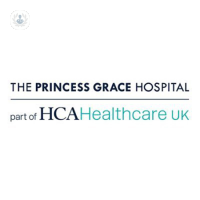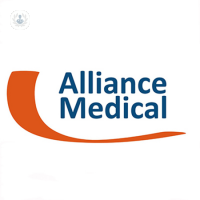Prostate artery embolisation
Dr James Briggs - Interventional radiology
Created on: 04-12-2018
Updated on: 08-25-2023
Edited by: Carlota Pano
What is prostate artery embolisation?
Prostate artery embolisation is a minimally invasive procedure carried out under local anaesthetic that treats enlarged prostates by cutting off the arteries that feed the gland, hence making it shrink in size. This procedure is performed by interventional radiologists.

Why would you need prostate artery embolisation?
If you are suffering from benign prostate enlargement, then prostate artery embolisation is a treatment option to reduce the size of the enlarged prostate. Benign prostate enlargement can seriously affect the quality of life of those suffering, so finding a treatment to relieve the symptoms is important.
What does prostate artery embolisation involve?
During prostate artery embolisation, a catheter-like tube is inserted into an artery in your groin region. Once the position is correct, checked by an X-ray, the tube is inserted into both prostate arteries.
When the catheter is positioned in the prostate arteries, a special dye called a constrast medium is injected, which blocks off the arteries. The dye contains small particles that stay in the body permanently following this procedure.
Once both prostates are blocked, the catheter is removed and pressure is applied to the injection site until bleeding stops. This is not carried out under general anaesthetic, but just a sedative and a local anaesthetic in the groin.
How can you prepare for prostate artery embolisation?
This procedure is carried out in hospital, but can be done as a day-case procedure. A few hours prior to surgery you will have to stop eating and drinking.
Post-operative care after prostate artery embolisation
Following prostate artery embolisation, your pulse and blood pressure is monitored, and the entry site checked for any bleeding. After 4-6 hours, it is possible to return home where you should rest for up to four days. If there is any pain, painkillers will be prescribed. Most patients feel well enough to return to work after a week following this procedure.










